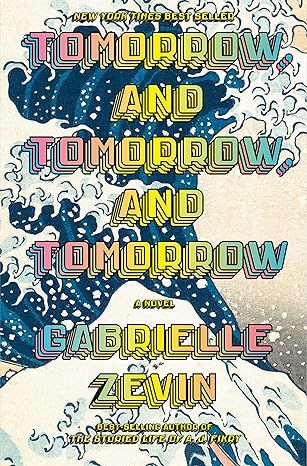
Tomorrow, and Tomorrow, and Tomorrow: A novel
4.4 out of 5
95,875 global ratings
NEW YORK TIMES BEST SELLER • Sam and Sadie—two college friends, often in love, but never lovers—become creative partners in a dazzling and intricately imagined world of video game design, where success brings them fame, joy, tragedy, duplicity, and, ultimately, a kind of immortality. It is a love story, but not one you have read before.
"Delightful and absorbing." —The New York Times • "Utterly brilliant." —John Green
One of the Best Books of the Year: The New York Times, Entertainment Weekly, TIME, GoodReads, Oprah Daily
From the best-selling author of The Storied Life of A. J. Fikry: On a bitter-cold day, in the December of his junior year at Harvard, Sam Masur exits a subway car and sees, amid the hordes of people waiting on the platform, Sadie Green. He calls her name. For a moment, she pretends she hasn’t heard him, but then, she turns, and a game begins: a legendary collaboration that will launch them to stardom.
These friends, intimates since childhood, borrow money, beg favors, and, before even graduating college, they have created their first blockbuster, Ichigo. Overnight, the world is theirs. Not even twenty-five years old, Sam and Sadie are brilliant, successful, and rich, but these qualities won’t protect them from their own creative ambitions or the betrayals of their hearts.
Spanning thirty years, from Cambridge, Massachusetts, to Venice Beach, California, and lands in between and far beyond, Gabrielle Zevin’s Tomorrow, and Tomorrow, and Tomorrow examines the multifarious nature of identity, disability, failure, the redemptive possibilities in play, and above all, our need to connect: to be loved and to love.
About the authors
Gabrielle Zevin
GABRIELLE ZEVIN is the New York Times and internationally best-selling author of several critically acclaimed novels, including The Storied Life of A.J. Fikry and Young Jane Young. Her most recent novel is Tomorrow, and Tomorrow, and Tomorrow, a selection of the Tonight Show’s Fallon Book Club, the winner of the Goodreads Choice Award, a finalist for the Wingate Prize, and one of the best books of the year, according to the New York Times, the Washington Post, Time, Entertainment Weekly, the Atlantic, Amazon.com, Oprah Daily, Slate, NPR, and many others. The Storied Life of A.J. Fikry is now a feature film with a screenplay by Zevin. Her novels have been translated into forty languages. She lives in Los Angeles.
Read more
Reviews
Linda
5
I loved this book!
Reviewed in the United States on June 3, 2024
Verified Purchase
I am a 75 year old woman NOT into gaming at all and have very little knowledge of this industry. The writing style was easy, the characters were interesting as were their relationships and the whole gaming thing was fascinating to me. The story moved through so much in the characters lives that I could not put this book down. One of my best reads so far in 2024.
Read more
Marcia Wark
5
A really good reading experience!
Reviewed in the United States on May 25, 2024
Verified Purchase
I really enjoyed this book for the most part, but sometimes I got lost with all of the technical details. I like that the story of Sam and Sadie and how they met was kept throughout the entire book, and I love that the ending was left with a possibility of maybe writing a sequel. I don’t know if that was intentional or not, but so many books leave me feeling like they are unfinished or that the ending is too abrupt! Tomorrow, Tomorrow, and Tomorrow left me wanting more, but in a good way!! Thank you Gabrielle Zevin for a wonderfuly and exceptionally well written book!!
Read more
Derek
5
Became an instant favorite upon completion
Reviewed in the United States on June 1, 2024
Verified Purchase
Apart from being the prettiest book on my shelf (I mean come on, even the spine is beautiful)… it’s totally one of the best books I’ve ever read.
It’s so hard to say what it’s about. It’s about two people that played games when they’re kids, and they go on to make games together when they’re older. It’s so much more, though. It’s about life and death, the creative process, how your coworker could possibly be the best you’ve ever had. Art initiating life, life imitating art. Video games, video games, video games.
It’s a beautiful, masterfully crafted story. Full of amazing characters that you may not like initially, but I’m positive you’ll grow to love them as I did.
I shed one of those grown-man Denzel tears when I read the last sentence. An absolute page turner.
Read more
2 people found this helpful
Eric Juneau
4
A Love Letter to Video Games (and the friends we made along the way)
Reviewed in the United States on July 18, 2023
Verified Purchase
This book seems to be sweeping the nation as the new “The Fault in Our Stars“. It’s got higher than 4 and a quarter stars for having 300,000 reviews, which means it’s a box office smash (at least as far as books ago). So what is it about? Is it a romance? An adventure? A family saga?
Kind of all three, but also not all three. It’s the story of two people who create a video game company. These two, a girl and a guy, used to be friends as pre-teenagers, but had a falling out. In college, they both fall into programming which leads to video game making, which leads to the story at hand as they become friends and business partners. Also, it’s about the other people that come into their life as a result of that, such as the best friend/roommate who goes from theater major to video game producer and the girl’s college professor. The story takes place from 1995 up to present day.
Let’s talk about the two main characters. One is Sam. His trauma is that he has a foot that was broken in a million places, a handicap which has made him taciturn and stoic, though he reads like autistic–overanalytical, judgemental, aloof.
The second is Sadie who also found solace in video games, as her sister had childhood cancer and became the focus of the family’s attention. She bonded with Sam since they both were often in the children’s ward of the hospital. Sadie has bouts of depression and insecurity, even though she’s a game-making genius. This leads to an affair with her foreign-born video game professor who’s one of “those” types (egotistical, pompous, always thinks he’s right and everyone else’s opinion is wrong) and much unhealthy relationshippage occurs.
From the first chapter, I wasn’t sure how this would go down. Since the first main character is Sam, it sounded “The Curious Incident of the Dog in the Night-Time“. The writing sounded like writing. The dialogue did not sound like how people talk. But I gave it the benefit of the doubt and continued. It starts out almost being a sick kids romance (The Fault in Our Stars, Everything, Everything, Five Feet Apart) But I was able to get past that and into the core of the book, which is about the creation of video games–what ludonarration means, video games as art, as ways to make the audience feel something.
It romanticizes the idea of video game development, ignoring things like “crunch time“, running a business, office politics, and other meta elements that come with complex media production. Instead, the author focuses on the relationship between the people working on the project (e.g. game producers as public figures such as Will Wright or Richard Garriott).
The author is writing video games not as they were but how she wishes they could be. Which would be fine… if the majority of this book didn’t take place in the past. See, the big video game they make is called “Ichigo” and the way they talk about it, it seems to be along the lines of “Limbo” or “Undertale”. It sounds artsy and avant-garde, which would be fine if this took place today. But in 1995, there were no such things. Video games didn’t make people cry in 1995. And they certainly weren’t used as pack-in games for new consoles, which is what this game becomes (as part of a plot point). The top games in 1995 were Quake, Duke Nukem 3-D, Command and Conquer, Super Mario 64, etc. War games. Shooters. Well-established franchises.
You couldn’t be successful unless you were at least a little bit commercial. There is no freakin’ way someone would have made an artsy game as the pack-in. (They weren’t even using pack-ins anymore by this time.) And certainly not a game from a new unproven studio with just two people. There were no Bastions or Insides or Journeys or even Bioshocks that you could point to and say “here’s a successful example of the video game we’re making and that’s why this is going to work.”
So that’s what bothers me the most–the backdrop is not plausible, and I pointed out a hundred times where “this wouldn’t have happened”, “no way should this have happened”, “the industry would have reamed them out if this happened”. The only game during this era I could even try to point to that succeeded was “Myst”. And that game succeeded because it had a big new gimmick–the CD-ROM which allowed complex graphics and FMVs. No such innovations in this book. It wasn’t until 2003 that companies started taking chances with non-traditional games (e.g. “Katamari Damacy” and “Shadow of the Colossus“).
On the other hand, maybe this is the author writing about video games and how they evolved as she wishes they had been. Instead of it all being guns and gore and misogynistic heroes like Duke Nukem and Solid Snake, she wrote a universe where video games catered toward all genders instead of just guys. There’s no reason video games had to be marketed toward boys. It was just what they did in the eighties because executives believed in “there are toys for boys and toys for girls and there is no crossover.”
There is good writing here. I particularly fell for the beautiful chapter in the third act break (no spoilers!). If you don’t know anything about video games as an industry, you will enjoy this book. If you do, you will probably be tempted to throw it away because of how unrealistically it portrays the industry. Myself, I’m halfway on it. The story itself feels like something that could make an excellent Netflix short series. The video game backdrop drove me nuts, but I’d be lying if I said this wasn’t the kind of book I wish I could write.
Read more
86 people found this helpful
Gregg Tavares
3
In many ways this novel is about my personal dream life
Reviewed in the United States on August 15, 2023
Verified Purchase
In many ways this novel is about my personal dream life. What happens between Sadie, Sam, and Marx, starting a successful video game company with friends, was my dream for ~30 years from the easily 80s to the just a few years ago. I did start 3 of them but we were not successful though, during my career, I was lucky to have worked on several seminal, classic, successful and respected games. In that sense I could't put this book down because in many ways it's the life I wish was mine, at least the happy parts about successful and respected games. Even worked at a company in Santa Monica in 1999 and a best friend and colleague lived in Venice Beach so all of that hit close to my heart.
On the other hand the writing has all kinds of issues
-
Name dropping. This seems to be a new cliche but it's to name drop things of the era to try to set a mood/tone. I'm not someone who writes fiction so I'm not saying it's easy to do but however it's often done in a poor way in this novel. The way it's written often feels like someone wrote those names in bold and they seem artificially inserted rather than blending into the story. By names I mean which games they were playing, what movies they were watching, etc...
-
List paragraphs. Several times there are list paragraphs where author will write something like "Sadie was into a, b, c, and d, e, f, g, h, i, j, k, l, m, o, p, q, r, s, t, u ,v, w". These list paragraphs don't work and instead feel like the author trying to show off that they can make a long list on some topic to prove their credentials.
-
Game tech bologna. The author likes the harp on how "game engines" matter. They don't. They don't make games look the same any more than photoshop makes artwork look the same or cameras make photos look the same. Fans love to argue about game engines but what comes out is not up to a game engine and it's disrespectful of the artists, designers, and programmers to credit the engine with any real influence on their work. Take the games Monument Valley, Beat Saber, Return of The Obra Dinn, Hollow Knight, Subnautica, Death's Door, Cities: Skylines, Hearthstone, Ori and the Blind Forest, Cuphead, Valheim. Are you really going to look at those and claim they're all alike because they use the same game engine? And no, it didn't matter in the 90s either. The point being the author clearly doesn't know what they're talking about when they bring up game engine issues. Maybe that's not important to the average reader but it's important to this game creator.
-
Game tech jargon: There's no such thing as "burning out a graphics card" from game dev. If you could burn out a card then games themselves would burn them out. That doesn't mean graphics cards don't go bad. It's writing like "How'd you do the reflections? Oh, it was so hard, I burned out lots of graphics cards on that" is BS techno-jargon
-
"Rare words", the author likes to show off by using words most people don't know. Nearly every chapter has a few that make you feel like you're studying for the S.A.T. They don't add to the story, they only detract from it.
-
The rom-com level cheesy conflicts - After Sadie and Sam had spent over 600 hours together, Sam discards Sadie because he finds out she was recording her time with him for "community service". No one in the real world would get upset at something like this. No one could spent 600+ hours with someone and share so much and toss it all over such a trivial thing. Real friends would laugh it off as something like "if I hadn't they wouldn't have driven me every day to hang out with you". This a common in bad rom-coms. The writers want some way to introduce a conflict but fail to find something believable so they just write that one character gets upset and expect us to buy it even if no one would be upset but such a thing.
Read more
55 people found this helpful
Best Sellers
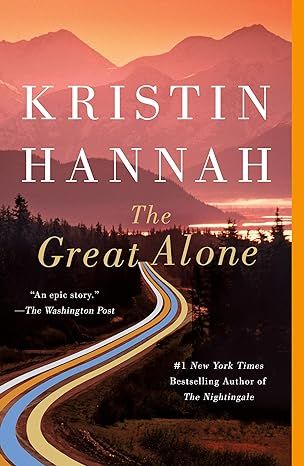
The Great Alone: A Novel
4.6
-
152,447
$5.49

The Four Winds
4.6
-
156,242
$9.99

Winter Garden
4.6
-
72,838
$7.37

The Nightingale: A Novel
4.7
-
309,637
$8.61

Steve Jobs
4.7
-
24,596
$1.78

Iron Flame (The Empyrean, 2)
4.6
-
164,732
$14.99
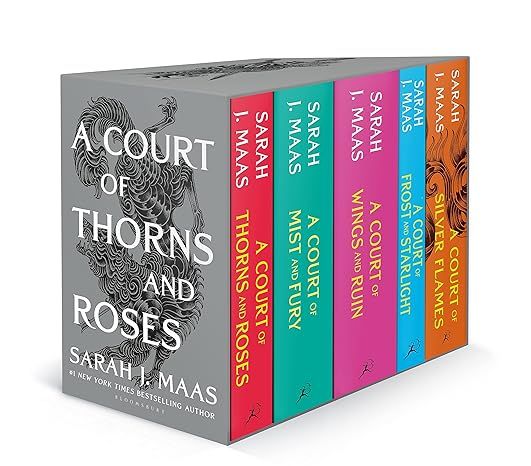
A Court of Thorns and Roses Paperback Box Set (5 books) (A Court of Thorns and Roses, 9)
4.8
-
26,559
$37.99

Pretty Girls: A Novel
4.3
-
88,539
$3.67
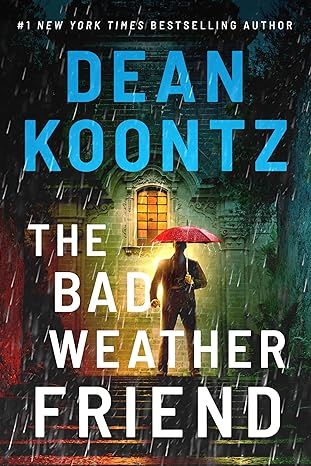
The Bad Weather Friend
4.1
-
34,750
$12.78
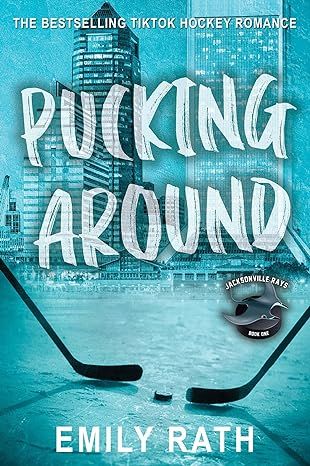
Pucking Around: A Why Choose Hockey Romance (Jacksonville Rays Hockey)
4.3
-
41,599
$14.84
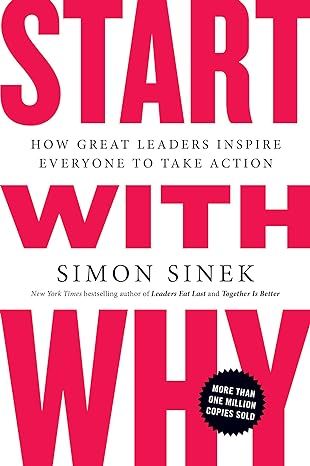
Start with Why: How Great Leaders Inspire Everyone to Take Action
4.6
-
37,152
$9.99
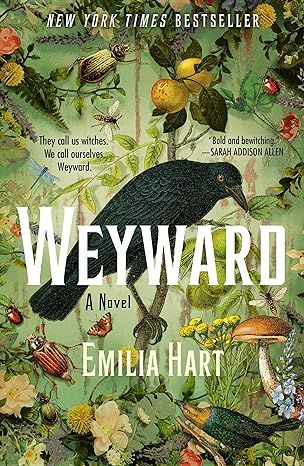
Weyward: A Novel
4.4
-
27,652
$11.99
